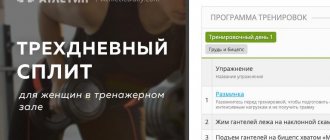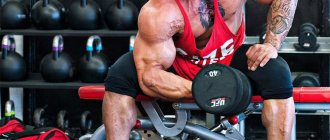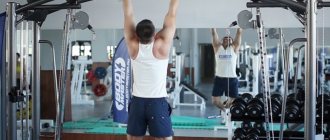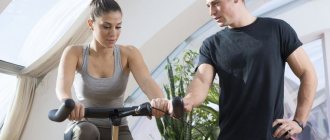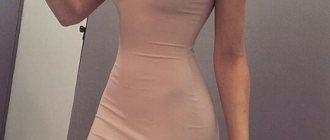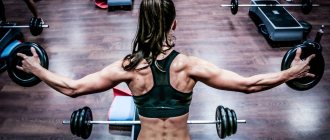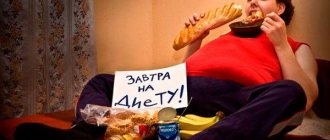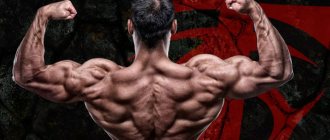June 24, 2011
We answer popular questions. How can teenagers start strength training correctly? At what age? Is it possible for girls to study?
Almost all teenagers are dissatisfied with their bodies. Many of them hope that working out at the gym will help them increase muscle mass and become more attractive. Alexey Korochkin, a researcher at the Department of Exercise Therapy and Sports Medicine at the Russian State Medical University, talks about how teenagers can start strength training correctly.
First, strengthen your back
According to Russian statistics, 90 percent of schoolchildren
suffer from various pathologies of the musculoskeletal system that require correction. A fairly large part of this group are children with various postural disorders.
Selection rules
Your child has grown up and wants interesting physical activity, but you don’t know what to offer him? We tell you how to choose a sport for a teenager.
An important factor in the appearance of poor posture is the weakness of the autochthonous muscles responsible for maintaining correct posture, posture and supporting the body in an upright position.
Autochthonous muscles
create a kind of axis of the body around which all other movements are performed.
“According to statistics from researchers from the USA,” says Korochkin, “up to 80 percent of professional athletes cannot reach the maximum of their capabilities due to the fact that their muscles are not sufficiently developed.” Weakness of autochthonous muscles
can be determined by the following signs: Even if there are no visible postural disorders, it is difficult for a teenager to maintain an upright posture, and he begins to slouch. The teenager has problems in sports that require agility - football, basketball, roller skating. Therefore, the first fitness classes for a teenager should be aimed at strengthening these muscles. If a child immediately starts training on weight machines, existing problems with the musculoskeletal system will worsen. In addition, the desired effect from the training will not appear, and in the future this will affect both the state of health and potential sports success.
Home workouts or gym workouts
Teenagers under 16 years of age are not recommended to work with additional weights. Exercises with your own weight (horizontal bar, parallel bars, push-ups, abs) will be quite enough to maintain the muscle corset in good shape and prevent muscle dystrophy. Therefore, you can exercise not only in the gym, but also practice training at home (if you have the necessary equipment at home) or on the sports ground in the yard. The main thing in fitness is regularity and correct exercise technique.
If you do not have the opportunity to work out with a trainer in the gym, you can independently master the technique of performing the exercise using videos or pictures. But the main rule of self-training at home is to focus on your physical sensations. If you feel muscle pain, tingling in your chest, or numbness while doing the exercise, stop and seek advice from a specialist. A little discomfort is normal; pain is a contraindication to training.
If there are special features in the development of your body (diseases of the cardiovascular system, musculoskeletal system, etc.), you should only exercise under the supervision of a trainer. A qualified trainer will develop a specialized training program tailored specifically to your abilities and needs.
The presence of a trainer will allow you to develop the correct technique; he will not only tell you, but also help you physically correctly position your body in space, correctly distribute the load, tell you which dead spots you are not using, and how exactly to work with a certain muscle group. That is why the quality of training with a personal trainer is many times higher.
When should classes start?
The main principle of training in adolescence is to create a “base” for the future. There is no need to strive to achieve quick results - the growing body still needs to form correctly. Therefore, all strength training for teenagers must include stretching exercises to develop flexibility. You can start training on exercise machines when the child’s period of intensive growth ends
. Growth itself is already a large burden on the musculoskeletal system. For girls, this period usually ends when they reach puberty at 11-13 years of age. For boys, the growth period may take several more years. Dosed strength loads before and during the growth period are also possible, but they should be carried out only using your own weight.
The difference between training for teenagers and training for adults
Of course, training for teenagers has a number of distinctive features from training for adults.
- It is necessary to understand that the hormonal explosion occurring in a teenager’s body directly affects the development of his figure.
- At this time, active growth of bones occurs and the muscle corset simply does not have time to grow as quickly, so stooping, underdeveloped muscles of the lower back, core, and leg muscle cramps appear.
Regular training will help neutralize the influence of hormonal factors. Training will help not only muscle development, but also socialization, adaptation, self-control and increased self-esteem of a teenager.
Not just hardware
“There is a misconception that muscles can be pumped up only with the help of exercise machines,” notes Korochkin, “but a good effect can be achieved with the help of your own weight.” Such exercises include push-ups, pull-ups, and abdominal exercises. Girls can also go to the gym. But
the load carried out using their own weight and using elastic bands and small weights
more physiological This allows girls to become flexible, slim and maintain good muscle tone.
How to increase the load?
In order for a teenager to make progress in pumping his legs, he must periodically increase his load. This should be done when the teenager notices that the exercises have become easy to perform. And they no longer cause the same feeling of fatigue as before.
To increase the load, a teenager needs:
- Stop resting for long periods between sets and reps.
- Start doing the exercises more slowly. So that the body is under load for as long as possible.
- Do sets of exercises periodically. Perform sets with minimal rest. Or without it at all.
- Do more reps. Use means for additional load (dumbbells).
All of these recommendations will help your teenager increase their load effectively and safely.
How to choose weight?
The choice of weight depends on the training goal. It is selected normally when a person can correctly perform the exercise for a sufficient number of repetitions. It is advisable for a teenager to choose a weight that allows him to do about 15 repetitions
.
If you can do more, the weight is insufficient; if you do less, you are overweight. Strength training cannot be organized according to the principle of “training the whole body at once.” The work scheme must be structured so that each session involves working on a specific muscle group. “One day we do the arms, the second the legs,” explains Korochkin, “then the torso, shoulder and pelvic girdles.” It is important to prevent
inflammation in the tendons and joints - if pain appears in them after exercise, the load should be reduced.
How to pump up chest muscles at home
August 14, 2021 434
Do you want to have beautiful, pumped-up breasts, but don’t know how to achieve this result, and you don’t have the opportunity to visit fitness centers? An alternative to the gym with expensive memberships is to train at home, where available tools and some light and inexpensive equipment allow you to achieve the desired results.
Below we will take a closer look at how to pump up your breasts at home, what equipment you will need for this, and much other important information.
A little about the anatomy of the pectoral muscles
Before you start doing home workouts, you should become a little familiar with your body structure. Many novice athletes make the same mistake - they start training without knowing what exactly they are training.
As a result, athletes do not achieve their goals, are disappointed and sometimes harm their health. The body is a trainer and you need to know exactly where and what to pump. Therefore, let's look at the pectoral muscles from an anatomical point of view.
The chest muscles are one of the largest muscle groups in the body, which is located on the outside of the thoracic region and consists of 3 muscle bundles, which can be divided into two groups.
Muscle fibers of the shoulder girdle:
- pectoralis minor muscle;
- pectoralis major muscle;
- toothed;
- subclavian muscle.
Pectoral intercostal muscles responsible for contracting the human diaphragm:
Each muscle group has its own structure, and in order to pump them up, it is necessary to use various movements, training and weights. The chest muscles are unique in their physiology and predisposition to growth. And since their fibers are located in different directions, you need to train your chest from different angles.
We should also not forget that this is a large muscle group and is capable of working in the strength mode of high-intensity training.
The most important
A teenager can start training on weight training equipment when the period of intensive body growth has ended.
First you need to strengthen the muscles responsible for maintaining the vertical position of the body. Then you can start working using your own body weight and gradually move on to weight training. But only if growth allows, and classes are conducted under the guidance of an experienced instructor. Tags:
- Back
- Exercise equipment
- Power training
- Teenagers
To leave a comment you must be an authorized user
Features of leg pumping
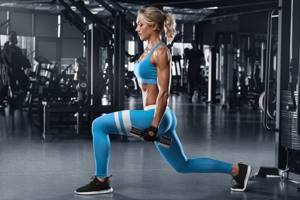
Before starting to pump up their legs, a teenager must become familiar with their structure. Understand how muscles function. This will allow the teenager to pump them more effectively.
The muscles located in the human legs are responsible for different processes:
The muscles located on the calves are responsible for bending different parts of the leg. Both feet and legs.
- The quadriceps is needed so that a person is able to flex and extend the entire leg as a whole. Particularly in the knee area.
- The muscles located in the buttocks are used by the body to rotate the hips. And also move them in different directions.
- The hamstrings are used by humans to bend their legs. And also for rotating both hips.
To build up your legs, a teenager needs to exercise regularly. While doing strength exercises. And gradually increasing the working weight.
Gainer and protein in adolescence
Now the wrath of a million mothers will fall upon me, but I will still say that all these proteins and other chemicals are harmless even for babies . Therefore, they can be safely used when gaining weight. I wrote about this in articles about sports nutrition for weight gain, namely about gainer and protein for skinny guys.
But if you still decide to take this step at such a young age, then be prepared that the liver will fail not by the age of 30, but by 20, and the piper will no longer stand at 18. These are, of course, jokes and myths, but I I wouldn’t risk becoming a young myth buster and testing all this on my own experience, especially since your parents may not approve of your eagerness to use sports supplements. So buy some buckwheat, some breast meat, and run and swing.
Parallel bars training
Bars are an excellent complex exercise with your own body weight, which allows you to build the muscles of the chest, triceps, and shoulders. In addition, by doing leg raises, you can pump up the rectus abdominis muscle well.
If the emphasis is on the chest, then you need to:
♦ keep your torso at an angle;
♦ during the process of lifting/lowering, do not press your elbows to your body;
♦ when lifting at the highest point, leave your elbows bent.
If you need to pump up your triceps, then you need to:
♦ keep your body straight;
♦ keep your elbows as close to your body as possible during the exercise;
♦ at the top point of the arms, fully straighten to achieve the peak of contraction.
In general, the best comprehensive approach is considered to be a combination of swimming, pull-ups, dips and floor push-ups.
Main complex
Gymnastics at home for girls and boys is an important component of the proper development of a child. It is especially important for schoolchildren, who have to sit at their desks in class 5 days a week for 6-7 hours, and after returning home spend another couple of hours doing homework. This lifestyle leads to a decrease in tone.
Low physical activity provokes the development of a number of ailments. Simple exercises help to carry out prevention, and the complex is selected in accordance with the age of the young lady.
For preschool girls
It is better to carry out charging in a spacious, ventilated room; it is better if there is a TV or stereo system in it so that you can turn on the music.
You should start your morning exercises with a warm-up. It helps increase heart rate and breathing, warm up muscles and tendons. High-quality gymnastics is the key to reliable protection from injuries in the process of performing artistic gymnastics.
Warm-up
Warm-up may include the following simple tasks:
- walking in place, raising your knees as high as possible;
- circular movements of the head: clockwise and counterclockwise;
- tilts: forward/backward, left/right;
- shoulder rotations: forward/backward;
- stretching: sit on a half-split, splits if possible.

When the warm-up, which takes an average of 5 minutes, is completed, you can proceed to the main complex.
Squats
This exercise strengthens the leg muscles.
The algorithm is as follows:
- place your feet at shoulder level;
- extend your arms forward;
- your heels are firmly on the floor; try not to lift them while performing;
- start with 20 squats and gradually increase.
Push ups
A girl may not always succeed in this exercise the first time, but it helps strengthen the muscles in the arms and chest. It is better to perform it immediately after squats, in order to unload the leg muscles and load the shoulders. This sequence will allow you to evenly distribute the load throughout the body.
The algorithm is as follows:
- the width of the arms helps to choose the optimal load: if the arms are located close to one another, then the load falls on the biceps, and if the arms are wide, on the chest;
- the body is straight, only the arms work;
- repeat 5-6 times.
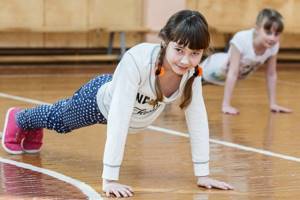
There is another option for performing an exercise that girls can do if they can’t do push-ups. It also helps to work the muscles of the arms and chest. It is necessary to smoothly lower the body to the floor in a certain sequence, starting from the knees, and then the pelvis and the entire body. In the same sequence, smoothly return to the starting point.
Burpee
Gymnastics at home for preschool girls should definitely include this task, because it helps develop endurance. During its execution, the muscles of the legs, abs, arms and the entire body actively work.
Step-by-step algorithm:
- the starting point is a standing position;
- then emphasis crouching;
- jump out with both legs, taking a prone position;
- lie on the floor and do push-ups;
- pull your knees to your chest, again finding yourself in a squat position;
- Jump up, clapping your hands above your head.

Repeat the entire complex 8-10 times.
Press
Helps strengthen the muscles in the abdominal area. The starting point is a lying position on the floor. Place your hands behind your head, legs straight (you can ask an adult to hold them to make it easier to complete the task). Then begin to raise your arms, head, shoulder blades, trying to reach the tips of your toes with your fingertips.
Then smoothly take the initial pose. Repeat initially up to 5 times, and then increase the number of repetitions.
boat
It helps strengthen the muscles in the lower back.
The algorithm of actions is as follows:
- take a lying position face down;
- extend your arms forward, legs together;
- raise your arms and legs at the same time, feeling the tension in the lumbar region;
- return to the starting point.

Repeat 10-15 times.
Birch
This exercise is often performed by children in physical education classes, but at home it is recommended to do it a little differently - throwing your legs as far behind your head as possible. If the child succeeds, he can reach the floor behind his head with his fingers.
The task should be performed slowly without jerking, the emphasis is on the shoulder area, but in no case on the head and neck. Repeat lifts up to 10 times.
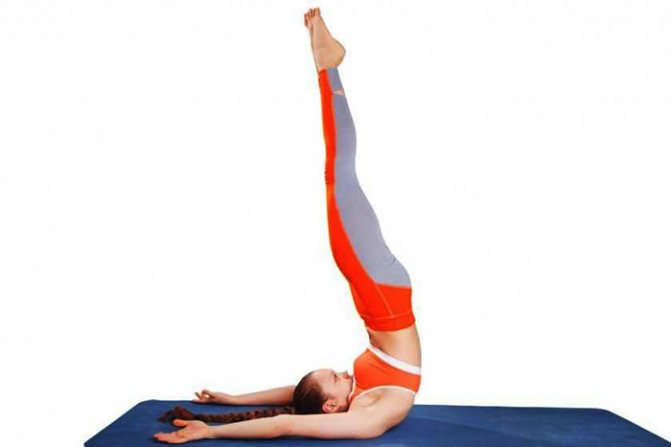
To ensure that the child develops properly and any physical activity is not a burden to him, exercises should be done daily. It won't take more than 20 minutes. When performing tasks, you should follow the drinking regime - 2 sips every 2 exercises. In total, a child should drink up to 6 tbsp per day. water. An hour before exercise, consume a portion of complex carbohydrates.
For younger schoolgirls
It is better to start accustoming a schoolgirl to morning exercises in the warm season. It is better for adults to go for morning jogs with their children. Achieving results to improve health and develop endurance of the body is only possible if the gymnastic complex is performed systematically.
Before introducing exercise into your child’s daily life, it is better to consult a doctor. So, in the morning, go for a short jog, and then at home you can perform several simple sports tasks, which on average will take up to 20 minutes of time.
Walking in place
The schoolgirl walks in place for 1 minute, raising her knees high, placing her hands on her belt.
Tilts
Place your feet shoulder-width apart, hands lightly touching your shoulders:
- after inhaling, bend your body forward and point your arms to the sides;
- as you exhale, return to the starting point.

Touching the floor
Legs at shoulder level, arms extended along the body:
- inhale – bend forward, hands touching toes;
- exhale – straighten your back.
Snatch arm raise
Stand up straight, raise one arm up and extend the other along your body:
- step forward, change hands with a sharp jerk;
- return to the starting point.
Walking with sharp turns
Stand up straight, hands on your waist:
- lunge forward with your right leg and turn your body to the right;
- return to starting point;
- lunge with left leg, body to the left.
Body rotations
Stand up straight with your feet together. Turn your torso first in one direction and then in the other. Legs stand still, hands on waist.
You can also put your hands behind your head and turn your torso as deeply as possible, while keeping your feet firmly on the floor.
Jumping in place
Place your hands on your waist, legs together. Initially, you should do three jumps in place, and then one jump with a turn to the left and another one with a turn to the right.
Stretching
After any morning exercises or performing a gymnastic complex, you should definitely do some stretching. All exercises are performed smoothly, without jerking, otherwise you can easily get injured. The best stretch is the splits.
You can also sit on the floor:
- legs extended forward, fingers reaching towards toes;
- spread your legs apart and first stretch your hands to one leg, and then to the other.
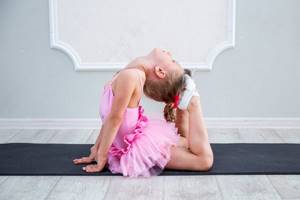
The ring is another effective exercise that is aimed at stretching the muscles of the back, shoulders and front of the thigh.
It is performed in the prone position:
- place your hands as close to your stomach as possible;
- the head stretches upward;
- bend your legs and stretch your toes to the back of your head, trying to touch it;
- freeze for a few seconds;
- relax, and then repeat again.
For teenagers
What teenage girl doesn’t dream of a beautiful, slender figure? In addition, recently, increasingly, parents of teenagers are concerned that children at an early age are suffering from excess weight. The fact is that teenagers do not watch their diet and are increasingly consuming fast foods and, as a result, obesity.
Exercises for girls, designed to be done at home, will not only help make your figure slim and beautiful, but will also remove extra pounds. An effective complex may include only 5-6 exercises, but with their help you can pump up all the muscles of the body, start metabolic processes and improve the supply of oxygen to internal organs by activating blood circulation.
Warm-up
With its help, you can warm up the muscles of the whole body, help them prepare for stress and protect them from injury during the execution of the main complex.
Warm-up may include the following tasks:
- walking in place at a calm pace for 3-4 minutes;
- slow rotations of the head, first clockwise, and then counterclockwise - it is enough to perform 5-6 times;
- place your fingers on your shoulders and slowly perform rotational movements: forward/backward, back/forward;
- tilts: right/left, forward/backward.
Mill
To perform it, you need to take a standing position on the floor, your naked legs are at shoulder level, your arms are spread out to the sides.

After inhaling, tilt your body parallel to the floor, keeping your back perfectly straight. Use the fingers of your left hand to touch the toes of your right foot, then change direction. Perform 8 repetitions.
Bike
Lie on your back, place your arms along your body, raise your lower limbs up, maintaining an angle of 45 degrees. Perform rotational movements with your legs, imitating riding a bicycle. Rotations are performed first in one direction and then in the other direction. This exercise helps to effectively work the muscles in the buttocks, strengthens the abdominal wall, and activates blood flow.
Squats
This task must be included in teenagers’ exercises. Initial position – feet are placed at shoulder level, palms rest on the pelvis, back is straight. Slowly squat as deeply as possible. Repeat 10-15 times.
Lunges
Place the palms of your hands together at chest level. The body stands exactly vertical. As you inhale, place your leg in front of you, resting on the floor. The back leg is the main support. Return to the original position and repeat on the other leg. And so on 10-12 times on each leg.
Teenage girls can do light exercise every day. But fitness exercises aimed at increasing endurance and losing weight are recommended by professional trainers to be performed no more than 3 times a week.
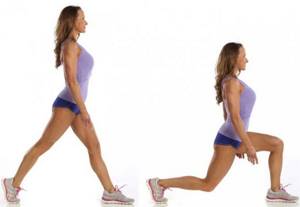
Any workout is a serious load on the muscles, and if they are loaded daily, it will be difficult to achieve results, since the body will simply launch the defense function and begin to resist. You definitely need to give your muscles time to recover, so it’s better to train every other day.
Load control
The logic of the training requires a constant increase in overload, and since pumping up your legs at home is required without additional weights, progress can be ensured by changing the training methodology:
- combine 2-3 exercises in one set, performing them one after another without rest;
minimize the break between approaches;
You can first use one of these techniques, later connecting the following.
Abs workout
Many green athletes believe that by performing 100 or more crunches per workout, more beautiful abdominal muscles are formed. However, this is a misconception, the correct creation of at least a flat, toned stomach and then a beautiful sculpted abs begins with the feeling of the muscles being trained.
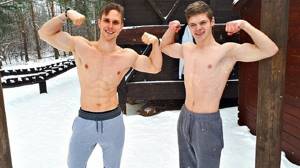
It is necessary to learn to breathe correctly; in any exercise, and not just when training the abs, you always take a deep breath in the relaxation phase through the nose and a powerful exhale in the tension phase through the mouth. In this case, the diaphragm is first filled with air and only at the end the pectoral muscles rise; all this will allow for good breathing development and a better supply of oxygen to the body.
How to properly design a workout?
Start your workout in the morning
In adolescence 13-16 years of age, it is recommended to start training with squats with your own weight, push-ups and pull-ups on the horizontal bar, the number of approaches of each exercise is within 3-4 for 10-15 repetitions.
Go swimming
During the week, visit the pool at least 2-3 times a week, devoting at least 30 minutes to one workout or the total distance swam should be 500 - 1,000 meters.
Start strength training with dumbbells
After performing a set of exercises with your own weight for 3-4 months, you can start doing heavier exercises, but with dumbbells. They will allow you to better feel the muscles being trained and diversify the load well. However, it is worth remembering that pull-ups, parallel bars and push-ups should still come first.
Strengthen the brain-muscle connection
An important task for effective training is control of the movements performed and the feeling of the muscles being trained. When performing this or that exercise, you need to feel that after the training a particular muscle received a good load and after the end of the exercise it was filled with blood, which visually briefly increases its volume.
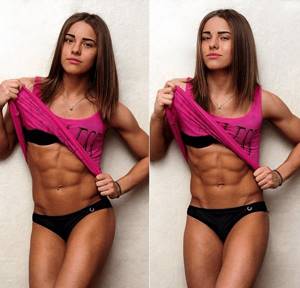
Barbell training after 18 years of age
The transition to heavy basic exercises with a barbell should be done only after adulthood (at least before this age, for general strengthening of the body, the loaded barbell when performing squats or deadlifts should not exceed more than 40-50 kg.) It is best to perform analogues of these exercises in the form of a leg press or barbell row.

